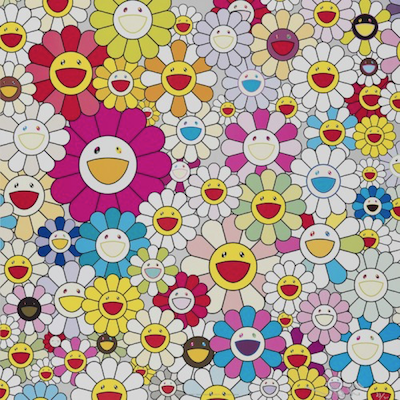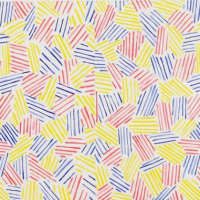
What is Superflat?
Superflat is an art movement founded by Takashi Murakami, heavily influenced by anime and manga. The term Superflat refers to the flattened forms found in Japanese animation, graphic art, fine arts, and pop culture, as well as the perceived superficiality of Japanese culture. Murakami's movement, which he self-proclaimed, is considered postmodern and critiques both the depth and shallowness of contemporary Japanese society. Superflat has been highly influential in bridging the gap between high art and popular culture.
Show All
- Show All
- Established
- Discoveries
Show All
ARTWORKS RELATED TO SUPERFLAT
Yoshitomo Nara
WOW (Works on Whatever) Project beach towel, 2010
Tapestry
Digital print on canvas
USD 12,000
Yoshitomo Nara
Marching on a butterbur leaf, 2019
Limited Edition Print
Offset Print
Inquire For Price
Takashi Murakami
Murakami Flowers in a Qinghua Vase, 2024
Limited Edition Print
Offset Print
GBP 2,400
Takashi Murakami
Flowerball: Koi/Red crowned Crane Vermillion: From Japan with Love, 2017
Limited Edition Print
Offset Print
USD 4,400
Takashi Murakami
We Are Destined to Meet Someday! But For Now, We Wander in Different Dimensions, 2016
Limited Edition Print
Offset Print
USD 3,600
Takashi Murakami
DOB in Pure White Robe (Pink & Blue), 2013
Limited Edition Print
Offset Print
USD 3,125
Takashi Murakami
And Then, And Then, And Then, And Then, And Then (Gargle Glop), 2006
Limited Edition Print
Offset Print
USD 3,125
Takashi Murakami
And then, and then, and then, and then, and then, 2006
Limited Edition Print
Offset Print
USD 3,125

Intaglio is a printmaking technique where a design is incised below the surface of a metal or stone plate. Ink is applied to the plate, filling the incised lines or depressions, while the surface is wiped clean. The ink in the depressions is then transferred to paper using an etching press. Common intaglio techniques include engraving, etching, and drypoint.

A laser print is created by using red, blue, and green lasers to expose photographic silver halide paper. After exposure, the paper is processed with photographic chemicals to produce an archival-quality print. This digital technology results in sharp images with highly uniform color and excellent detail.





















